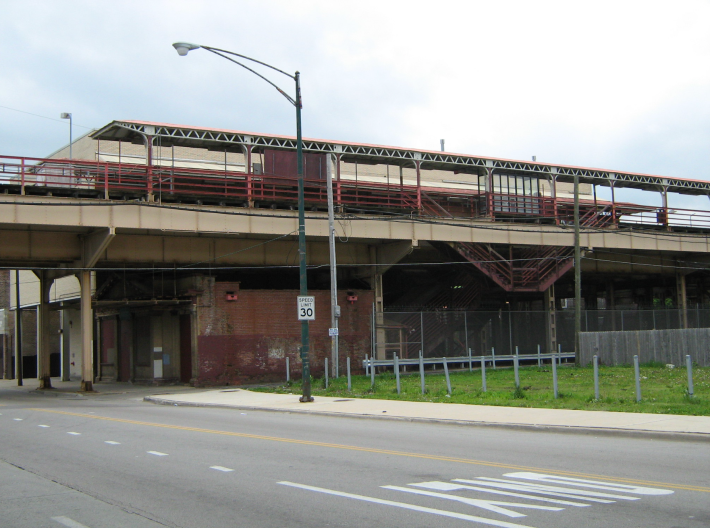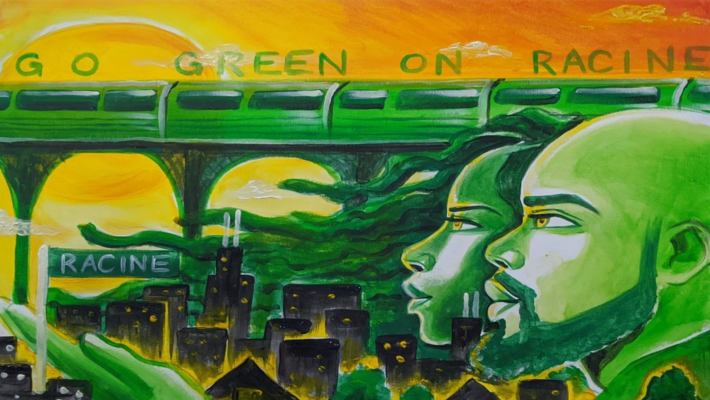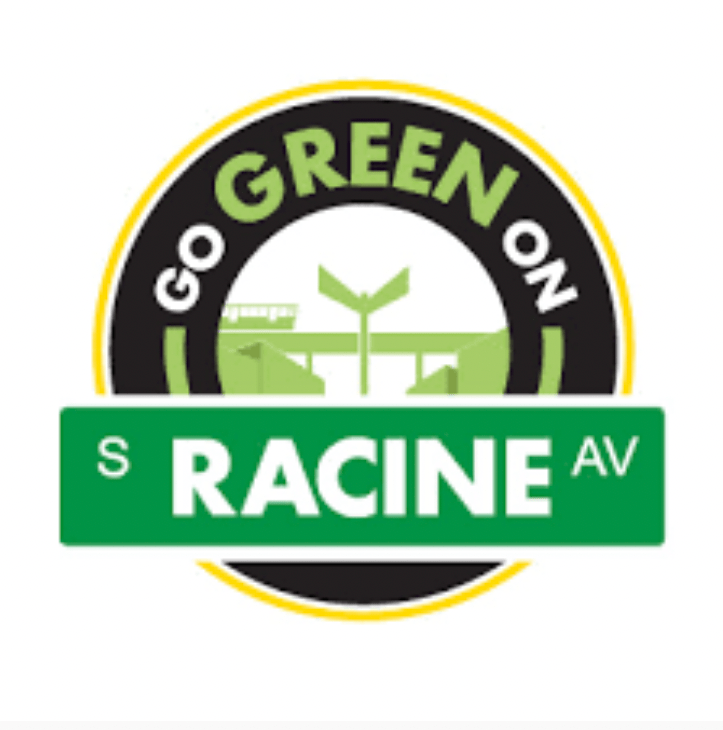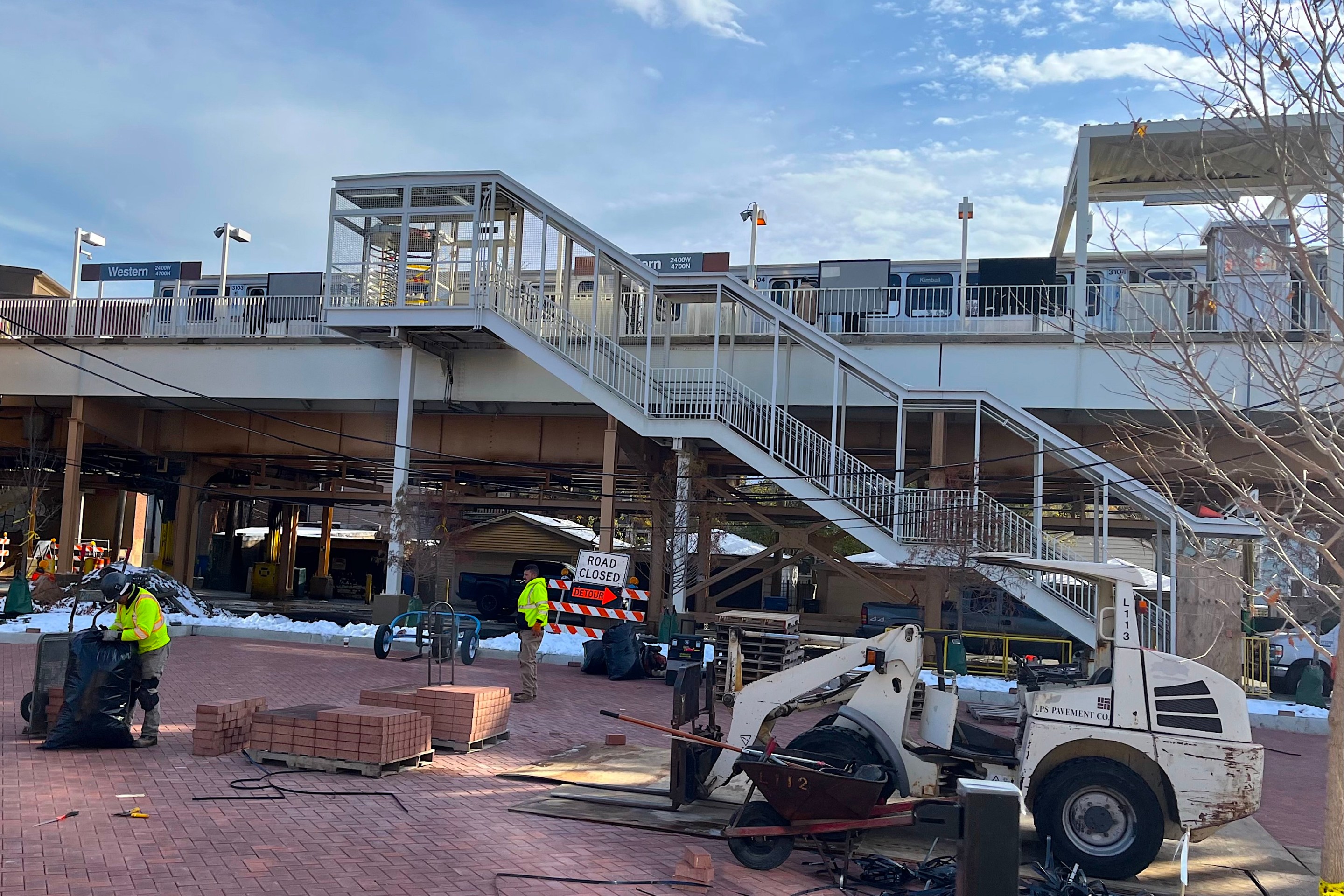Efforts to reopen the Racine Green Line Station on 63rd Street in Englewood have been underway for the better part of two years now. The "Go Green on Racine" campaign to improve transit access and otherwise improve opportunities in the underserved South Side community was launched by the Go Green Development Group, a coalition of community organizations including R.A.G.E., Teamwork Englewood, and IMAN.
According to Sana Syed, director of strategic initiatives at Iman, the organizations worked informally together for many years before officially joining forces in 2019 to compete for the Chicago Prize a grant program for collaborative, community-led initiatives on the South and West sides. The groups had to submit a proposal to use real estate development as a springboard to make the surrounding community more vibrant and prosperous.
"Go Green on Racine was our vision," Syaid explained. "It was a [holistic] neighborhood revitalization plan and was our vision to bring more light and energy into that intersection and then see that benefit the entire 63rd street commercial corridor and, more broadly, have catalytic effects across Englewood.
Go Green on Racine doesn't just seek to reopen the 'L' station. Another goal is to open a grocery store, the Community Fresh Market. The coalition also proposes converting Granville T. Woods Academy, a shuttered Chicago public school, to the Regenerator, a resource center to help formerly incarcerated individuals returning to society. In addition the plan includes Racine Village, a development with 20 affordable housing units where people could "live, work, and thrive."

But Syed said that the north star to all of this has been reopening the train station, which originally closed in 1993, supposedly on a temporary basis on a temporary basis as part of an overhaul of the entire Green Line. However, when the project was completed, the Racine stop was left closed, along with five other stations in communities of color. At the time, there was a protest by the Green Line Coalition, which argued that permanently closing the Racine station would lead to an economic decline.
R.A.G.E. recently surveyed community residents on the issue, and almost 99 percent of respondents voiced support for reopening the station. They commented that a new Racine stop would make their transit commutes more convenient, because they wouldn't have to walk another half mile to the Ashland station, or experience long waits for the 63rd Street bus.
"One comment that I think is really important is from one of the people who did the survey," said Asiaha Butler, the C.E.O. and cofounder of R.A.G.E. "They mentioned how we'd push the growth of businesses as well as invite people to spend [money at] local businesses. Growing up down the street, I remember how much the neighborhood started to change with the closing of the station." She added that if the stop had remained open, she and her family and friends would have had easier trips to college and work, with fewer transfers.
As part of the campaign, Syed conducted analysis to build a racial equity case. She said that when she spoke with transit officials, they told her their primary metric for determining which stations to close and which to keep open is ridership. Syed pushed back against the notion that ridership should be the deciding factor, arguing that impacts on racial equity are at least as important.
Syed noted that the Chicago Metropolitan Agency for Planning listed Englewood and its neighboring communities as one of seven economically disconnected areas in the region. "The result of this disconnection is that we have the lowest median household income," she said. "We have the highest rate of unemployment. We have the highest vacancies. We have the highest vehicle crash areas in our city. And Englewood has the longest average commute time, including platform wait times that turn out to be about one hour, which is the longest in the city. It also has very low car ownership rates, and Englewood residents can access only about 280 thousand jobs within a thirty-minute travel radius."

According to Syed, the work of the Go Green Development Group is very much a team effort. IMAN took the lead on transit analysis, working with officials and reaching out to the Congressional Future of Transportation Caucus. Teamwork Englewood was in charge of the grassroots campaign, such as a petition and a ballot referendum. R.A.G.E. created the survey for community residents.
The goal for the Go Green Development Group was to have the station reopen by 2024. Butler admitted they were being extremely ambitious with that goal, especially in light of how long it's been taking to get the CTA's south Red Line extension project moving. "We said 2024 because that would mark 30 years in total that the line has been closed," she explained. Butler added that the current hope is to get a commitment by 2024 from decision-makers that the station reopening will happen.
There was some good news in that department on December 7, when the Sun-Times published a letter from CTA president Dorval Carter Jr. endorsing the Racine project and stating that the transit agency has been working with local and federal officials to find funding and advance planning to reopen the station. Carter said the CTA helped former Congressional rep Bobby Rush ask for $2 million in federal funding to pursue detailed planning and design for the initiative. "The CTA, and the city, are fully committed to pursuing a reopened Racine Green Line station and making it a vital component of the community’s revitalization."
So it looks promising that it won't be too long before a reopened Racine station isn't just a proposal, but a reality.






